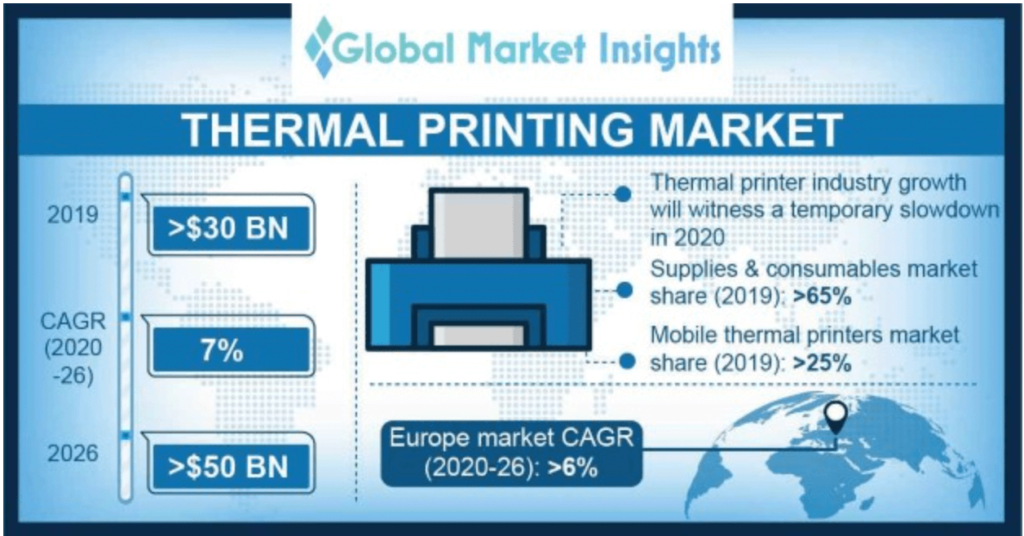Micro thermal printers are compact, efficient, and highly versatile devices widely used across industries such as retail, logistics, healthcare, and more. Their ability to deliver precise, fast, and reliable printing makes them indispensable in modern operations. In this article, we will explore the features, applications, and key market insights related to micro thermal printers, providing you with actionable insights to make informed decisions.
What Is a Micro Thermal Printer?
A micro thermal printer is a device that uses heat-sensitive paper and a thermal print head to create high-quality prints. Unlike traditional printers, it requires no ink or toner, making it a cost-effective and eco-friendly option for a variety of applications.
Key characteristics include:
- Compact Size: Ideal for embedded applications or portable use.
- Fast Printing Speed: Capable of handling high-volume tasks efficiently.
- Low Maintenance: With fewer moving parts, these printers are durable and require minimal upkeep.
Global Thermal Printing Market Overview
| Metric | Value |
|---|---|
| Market Size (2023) | Approximately USD 13.3 billion futuremarketinsights |
| Projected Market Size (2033) | Approximately USD 28.4 billion |
| Compound Annual Growth Rate (CAGR) | 7.8% from 2023 to 2033 |
Market Segmentation by Printer Type
| Printer Type | Description |
|---|---|
| Barcode Printers | Widely used for labeling and tracking products; dominate the market due to versatility and high demand in retail and logistics. |
| Point of Sale (POS) Printers | Essential in retail and hospitality for receipt printing; valued for speed and reliability. |
| Kiosk & Ticket Printers | Utilized in self-service kiosks and ticketing systems; growing with the rise of automated services. |
| RFID Printers | Combine printing with radio-frequency identification; increasingly adopted for advanced tracking solutions. |
| Card Printers | Used for printing identification and access cards; demand driven by security and identification needs. |
Key Industry Statistics
- Annual Shipments: Reached 12.5 million units, indicating robust demand across various sectors. Semiconductorinsight
- Technological Advancements: Significant improvements observed in print resolution (38% increase), IoT connectivity (52% growth), manufacturing efficiency (35% increase), and mobile integration (48% growth). Semiconductorinsight
Regional Market Insights
| Region | Market Share & Insights |
|---|---|
| North America | Holds a significant market share due to high adoption in retail, transportation, and logistics. Major players like Zebra Technologies and Honeywell are prominent in this region. mordorintelligence |
| Asia-Pacific | Expected to witness substantial growth, driven by expanding retail sectors and increasing adoption of advanced printing technologies. |
| Europe | Mature market with steady growth; emphasis on advanced manufacturing and retail solutions continues to drive demand. |
Applications of Micro Thermal Printers
- Retail: Used for printing receipts, labels, and barcodes; essential for inventory management and point-of-sale transactions.
- Healthcare: Employed in printing patient wristbands, prescription labels, and medical records; crucial for patient safety and data accuracy.
- Logistics & Transportation: Utilized for shipping labels, tracking tags, and tickets; vital for supply chain management and operational efficiency.
- Hospitality: Applied in printing guest receipts, orders, and tickets; enhances customer service and operational workflow.
Key Market Drivers
- Adoption of Automatic Identification & Data Capture (AIDC) Technologies: Enhances efficiency and accuracy in data collection across industries. Global Market Insights Inc.

- Demand for Mobile and Wireless Printing Solutions: Growth in mobile transactions and remote operations fuels the need for portable printing devices. mordorintelligence

- Technological Advancements: Continuous improvements in print quality, connectivity, and integration capabilities drive market expansion. Semiconductorinsight
Challenges
- Heat Sensitivity: Thermal printers’ performance can be affected by high temperatures, potentially leading to print head damage.
- Limited Color Printing Capabilities: Most thermal printers are designed for monochrome printing, which may not meet all user requirements.
The micro thermal printer market is poised for significant growth, driven by technological advancements and increasing adoption across various industries. While challenges exist, ongoing innovations and expanding applications are expected to sustain market expansion in the coming years.
Key Features to Look For
When choosing a micro thermal printer, consider the following features:
- Print Resolution: Aim for at least 203 dpi for clear and crisp output.
- Speed: Printers with 80mm/s or higher speeds are suitable for most applications.
- Interface Options: USB, Serial, and Bluetooth connectivity ensure flexibility.
- Paper Compatibility: Ensure it supports the required paper width and type.
- Reliability: Look for a print head lifespan of 50-100 km for durability.
Advantages of Micro Thermal Printers
Micro thermal printers offer several benefits:
- Cost-Effective: No need for ink or toner reduces operational costs.
- Eco-Friendly: Uses minimal consumables and energy.
- Low Noise: Operates quietly, making it ideal for sensitive environments like hospitals.
- Mobile-Friendly: Lightweight and portable options are available for field use.
Challenges and Limitations
While micro thermal printers provide numerous advantages, they do have limitations. Heat sensitivity can affect the durability of both the device and the paper. Most models are limited to monochrome printing, restricting their use in creative applications. Additionally, advanced models can be more expensive upfront.
Technological Innovations
Modern micro thermal printers have evolved significantly with innovations such as IoT integration, enabling remote monitoring and management. Bluetooth and Wi-Fi connectivity allow seamless integration with mobile devices, and enhanced print head technology ensures greater durability.
Market Drivers
Several factors are driving the growth of micro thermal printers:
- Automation: Increased use of automated systems across industries drives demand for embedded printers.
- E-commerce Growth: Rising online shopping trends fuel the need for shipping and label printers.
- Healthcare: Greater emphasis on patient safety and data accuracy boosts adoption in medical facilities.
Purchasing Guide
To select the right printer for your needs:
- Assess Your Application: Determine your printing tasks and volume.
- Evaluate Compatibility: Check for interface and software compatibility.
- Compare Pricing: Balance cost with required features and support.
- Look for Support: Choose a supplier offering reliable after-sales service.
Recommended brands include Zebra Technologies, renowned for durable and versatile printers, and Honeywell, known for high-performance industrial models. Reliable Chinese manufacturers also offer cost-effective options for bulk purchases.
External Resources
Explore these resources for more information:
- Future Market Insights – Thermal Printing Market Report
- Mordor Intelligence – Thermal Printer Industry Analysis
Conclusion
Micro thermal printers are essential tools for businesses across various industries, providing efficient, reliable, and cost-effective printing solutions. By understanding their features, applications, and market trends, you can make well-informed decisions to enhance your operations. Whether you’re in retail, logistics, healthcare, or manufacturing, the right micro thermal printer can streamline your processes and boost productivity.
For more insights, explore our product guides and industry updates.


